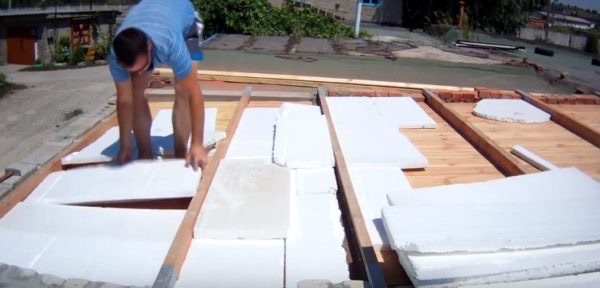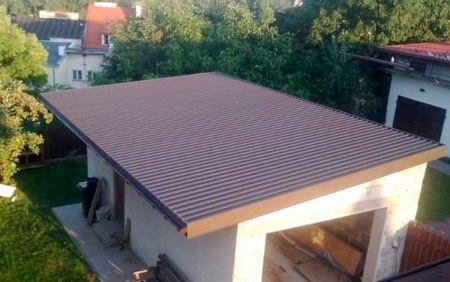Insulation of a pitched roof is carried out in several layers. For this purpose, for example, polystyrene foam or mineral wool is used. It is recommended to cover them with polyethylene film or other waterproofing material. A step-by-step description of installation work can be found below.

The content of the article
- Choice of insulation
- Step-by-step instruction
Choice of insulation
Before you figure out how to insulate a pitched roof, you need to decide on the material. First of all, you should pay attention to its thermal conductivity, vapor permeability and density. The following insulation materials are often used to finish the roof:
- Mineral wool - protects well from the cold, about 4.5 times better than wood of the same thickness. It has a natural composition, is easy to install, and gives little shrinkage. At the same time, it is expensive and can be damaged by moisture, so it needs dense waterproofing.
- In recent years, hip roof insulation has often been done with ecowool. In appearance, it resembles a mass consisting of numerous flakes. In terms of thermal conductivity and vapor permeability, it is comparable to mineral wool. But it shrinks more and can also be damaged by water.
- A warm pitched roof with polyurethane foam is another good finishing option. The material is applied by spraying, which eliminates seams and joints. Installation goes quite quickly, and if necessary, you can make a layer of any thickness. However, special equipment is required for application.
- Polystyrene foam is the most affordable, very lightweight, provides virtually no load and is easy to install, and is also resistant to moisture and rot. At the same time, it can suffer from sunlight and does not allow moisture to pass through well. Does not require waterproofing of a pitched roof.
- Extruded polystyrene is much more expensive, but it is strong and durable. But it is rarely used for roof insulation; preference is mainly given to natural materials or polyurethane foam.
Step-by-step instruction
Installation work is carried out in several stages. Insulation of a pitched roof using foam plastic as an example is performed as follows:
- Determine the amount of material, lift and lay it from the edge from which laying will begin.

- Place material in the spaces between the ceiling beams. The minimum plan is 2 layers, and in regions with cold winters 3-4 are better. In order for the insulation of a pitched roof from the inside and outside to be effective, each subsequent row is laid on top of the joints of the previous one (like brickwork).

- As they are laid, the joints are treated with construction foam using a special gun.

- Subsequent layers are laid in the same way.

- Rafters are placed on the floor beams, ensuring a slope of at least 6 degrees. To perform fixation, use perforated tapes - they are nailed or self-tapping screws are installed.

- To protect the roof from moisture, place a plastic film and secure it with tape.

- A wooden sheathing is placed on the rafters at equal intervals of 20-30 cm. Moreover, if the covering is made from a roll, it must be made continuous.

- Boards are installed along the edges, and sheets of metal tiles or other roofing covering are mounted on top.

From this review it is clear how to insulate a pitched roof of a private house. The technology is quite simple, the main thing is to perform the correct calculation and carefully install each layer. If different types of wool are used, waterproofing must be used. This can be a thick polyethylene film, overlapped by 15-20 cm. The joints must be taped with tape.


